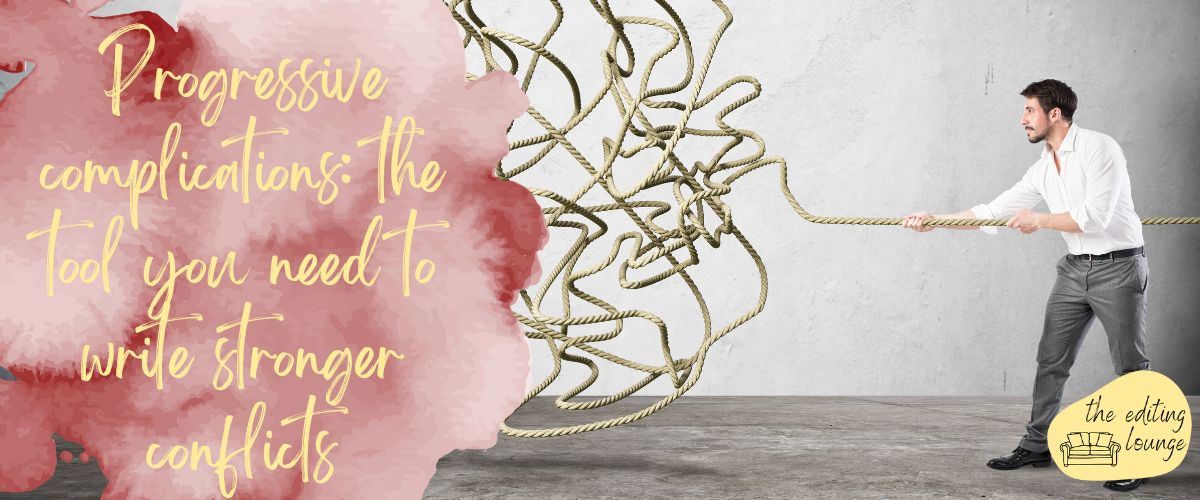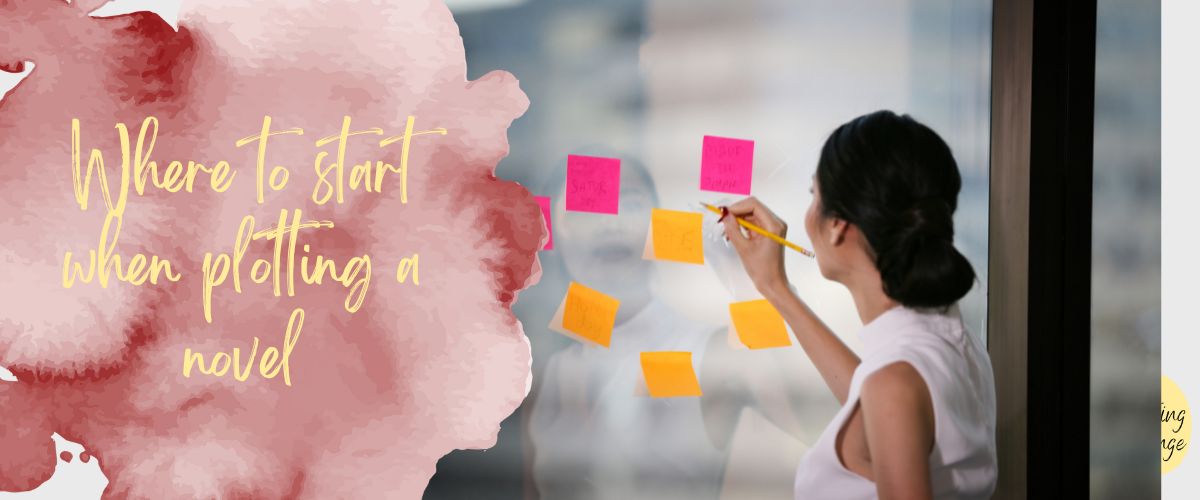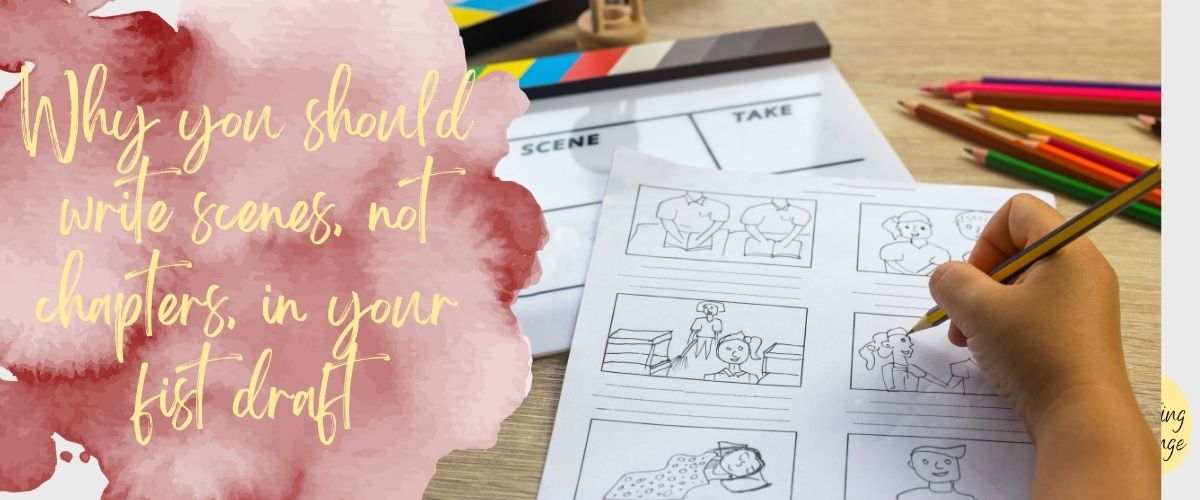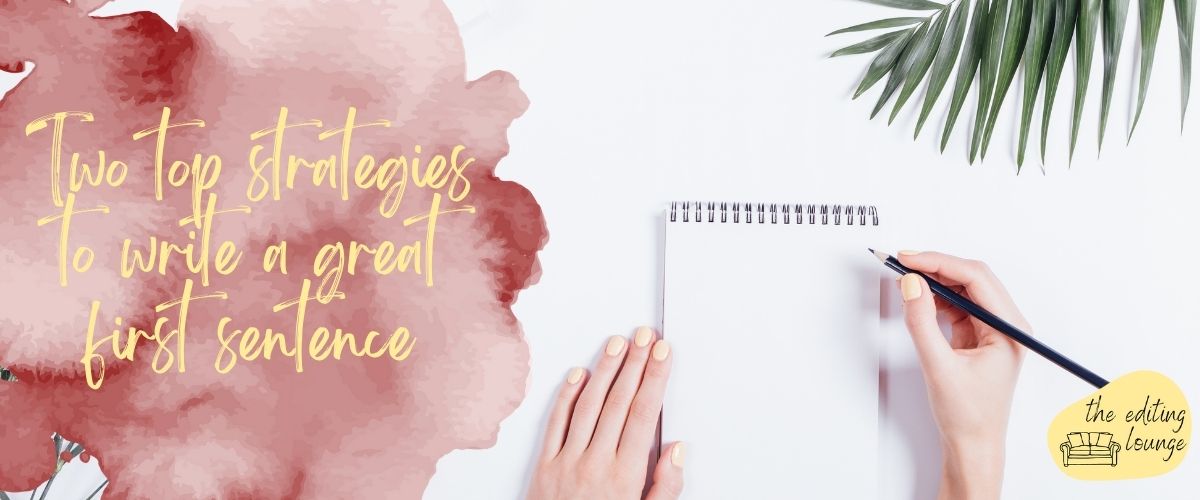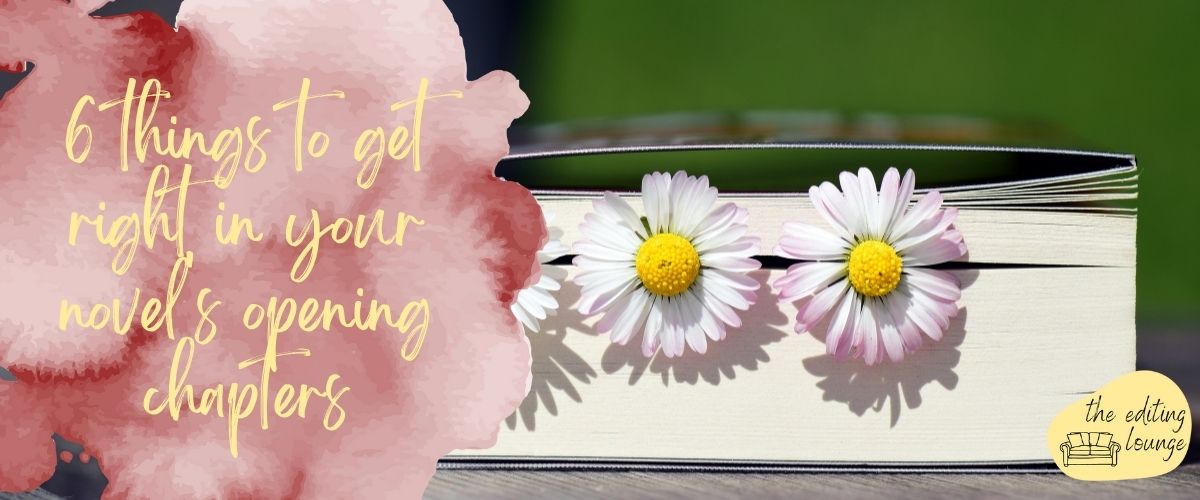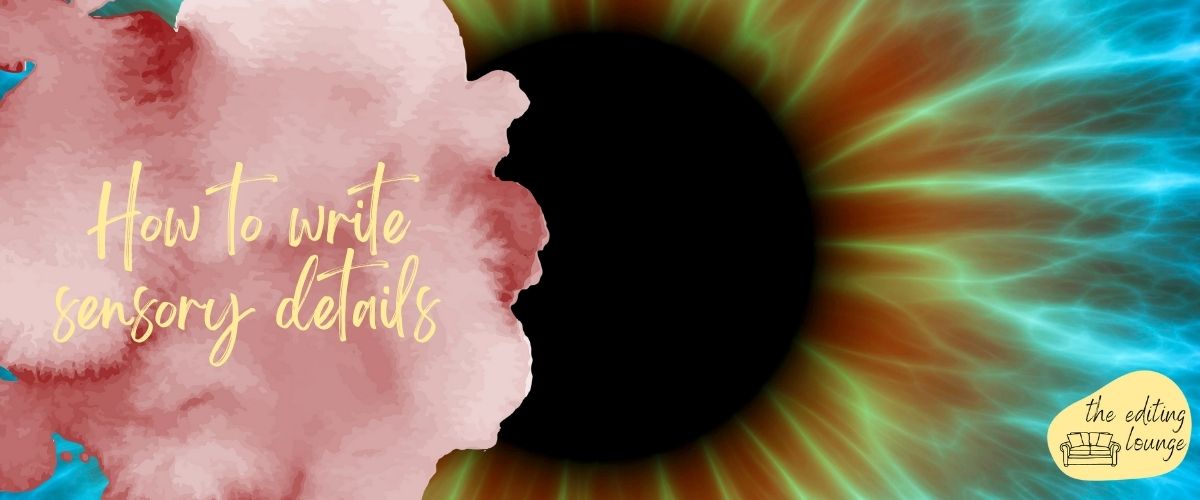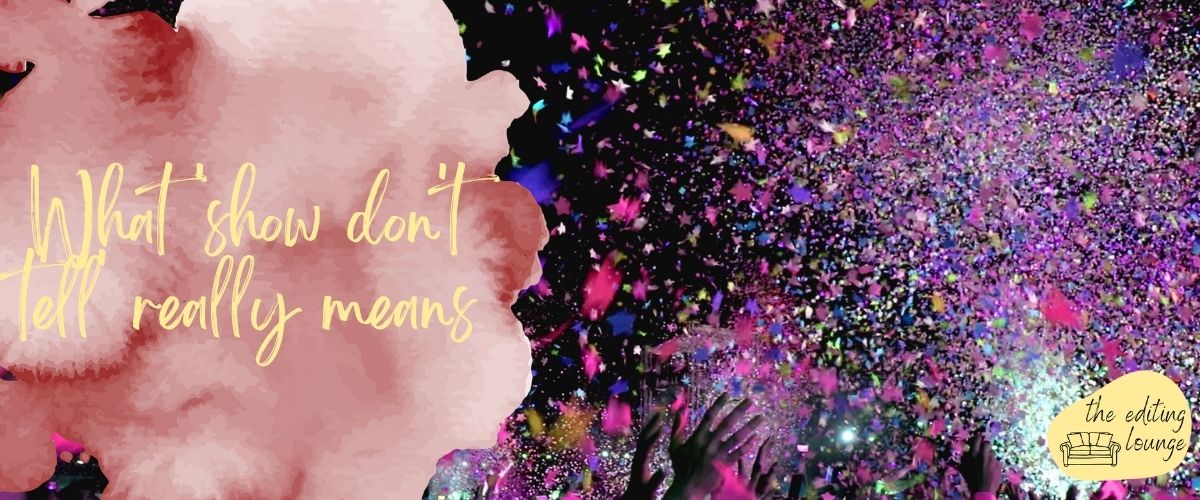Conflict is essential to stories of all kinds. A story can’t exist with conflict. If your character could get whatever they wanted at the beginning of the story, there would be no reason to write it.
Whether you’re writing a novel or a short story, conflict is what keeps your story going, what keeps the tension up, and what keeps readers interested.
So, you need conflict in your overall story question, in each chapter, and in each scene.
And progressive complications are a great way to make sure you get this right.
Progressive complications
One of the easiest ways to thread conflict through your story at every level is to plot progressive complications.
Progressive complications are people, places, items, or events that get in the way of your main character reaching their goal.
These complications can be good or bad. They can be challenges or tests that the main character must overcome to progress towards their goals. Or they can be tools or information that the main character needs to achieve their goals but are confused or surprised by.
So, how can you write effective progressive complications? Here are four tips to help you.


Write complications that get harder to overcome over time
Each progressive complication should be more difficult to tackle than the last. As the main character finds it more difficult to overcome challenges, you will ensure a forward momentum, which helps hook readers’ interest.
To keep this momentum up, plan all the conflicts that your character will face and order these conflicts so your character faces the smallest challenges first and the bigger ones later. In short, present your challenges/conflicts in an escalating order.
That said, it is important that the overarching conflict is apparent from the beginning. If readers can’t see this conflict or don’t care about the conflict, they’ll be less compelled to read.
You can also make your complications bigger as the story unfolds to ensure that the stakes get higher. A ticking clock, for example. What will happen if your character fails?
Each complication should require more work from your character to resolve the conflict. As the conflict gets harder to solve, it makes sense for the character to have to put more effort in.
Write complications that allow your character to change
Write progressive complications that give readers an idea of who your character is and how they’re changing.
Each conflict should present an opportunity for your main character to grow and shift towards becoming the person you want them to be by the end of the novel.
Character change is important but impossible without conflict. Progressive complications are helpful here because they force your character to make decisions under pressure. These decisions provide great turning points for your characters to develop and grow.
So, each conflict should culminate in a turning point. The conflict should lead to a pivot in the plot where the character does something, decides something, or realises something that changes the circumstance and pushes them past the point of no return.

Write complications that link to the character's goals

Write progressive complications that link to your main character’s goal. Ask yourself, what do they want? How is this complication/conflict preventing them from reaching this goal?
If your conflicts have nothing to do with what the character is trying to achieve, you can expect your story to fall flat. Readers will think ‘who cares?’
So, think carefully about what your character wants and what they need. Make sure all of your conflicts interfere with this.
Write unique, complex complications
Write a series of unique progressive complications. Seeing the same complications play out again and again gets repetitive and boring. So, keep things fresh with new plot events that let the story expand in several directions.
Your progressive complications should also be complex. You can achieve this by combining internal and external conflicts. Characters should face both: internal conflicts refer to how they feel, and external conflicts refer to their interactions with others.
So, as a simple example, someone whose wife has been murdered might be dealing with internal conflict (grief and anger) and external conflict (chasing down the murderer). It’s the combination of these internal and external conflicts that makes the bigger-picture conflict interesting.
When you match up internal and external conflict, your character’s overall conflict becomes more complex.

Think about your conflict timeline

When you’ve plotted your progressive complications, make sure you can identify these conflicts on a timeline.
If you can create a sense of time passing as the conflict rises, you’ll fill your story with even more tension, making readers turn those pages.
Need more help with your novel? Take a look at how my line editing service works.
About Charlotte

Charlotte is an award-winning writer and line/copyeditor who writes and edits for clients all over the world. She also works on the fiction team for Ambit, a UK literary and arts magazine.
She holds an international literary prize from Hammond House Publishing Group, two writing-related degrees, various marketing certifications, and training certificates from the Chartered Institute of Editing and Proofreading, of which she is a Professional Member.
Charlotte’s work has appeared in several anthologies, magazines, and literary journals, including Indigomania, Dream Catcher, and The Curlew.
She has also created a series of free self-editing cheat sheets to help new writers hone their fiction before sending their work off to a professional editor.
Progressive complications: the tool you need to write stronger conflicts
Conflict is essential to stories of all kinds. A story can’t exist with conflict. If your character could get whatever they wanted at the beginning of the story, there would be no reason to write it. Whether you’re writing a novel or a short story, conflict is what keeps your story going, what keeps the…
Where to start when plotting a novel
It’s arguable that the most important thing a novel should do is follow an arc of change. If nothing changes, do you really have a story? So, perhaps the first step to take when plotting your novel should be to decide, at the simplest level, what’s going to change. That’s easier said than done, but…
Why you should write scenes, not chapters, in your first draft
Plotting and writing a string of chapters long enough to fill a book is daunting. It’s impossible to know how many chapters you’ll need. And it’s impossible to order all of your chapters before you start writing and feeling your way around. That’s why it’s much easier to write your first draft in scenes instead…
How to write a love triangle
Although readers love a well-written love triangle, writing one is easier said than done. Love triangles that aren’t carefully plotted often end up predictable and clichéd. But when well developed and carefully thought out, love triangles can be great, moving plot devices that strengthen your story. What is a love triangle? A love triangle is…
3 ways to work out what your story theme is
I don’t need to know what my story theme is, I hear you say. Just let me crack on with my writing. I know. Hitting pause to think about your theme doesn’t feel like a priority when you’ve got all these great story ideas to get down on paper. Plus, some writers feel that identifying…
2 top strategies to write a great first sentence
Regardless of which genre you write, your first sentence needs to seduce your readers. Perhaps your first sentence is an invitation. A promise. A tease. A shock. A declaration. Whichever approach you adopt, this sentence must be irresistible. It must hook readers and pull them into the page. (Remember that lots of potential buyers read…
6 things to get right in your novel’s opening chapters
Writing a novel is a massive undertaking, regardless of how many books you’ve already written. And, no matter how many how-to books you’ve read and how many fiction workshops you’ve attended, it’s easy to miss the fundamentals when writing your opening chapters. When you submit your novel to an agent or publisher, they will almost…
How to write sensory details
When we include sensory details in our writing, we can evoke our readers’ senses of sight, sound, touch, taste, and smell. This is because painting a strong scene in your reader’s imagination helps them pull similar scenes from their own memories. Here, we’ll explore the science behind why evoking the senses can be so compelling…
What ‘show don’t tell’ really means
Lots of editors are quick to tell writers ‘show, don’t tell’. But this advice has been given so many times that we often forget to explain what it really means. I’ll break down the concept here so you can make the most of this advice. In brief, ‘telling’ is explaining what’s happening. Meanwhile, ‘showing’ is…
Using specific detail to bring your writing to life
Adding detail is essential to writing great fiction. But how specific is the detail in your manuscript? If I had received a pound for every time one of my writing tutors circled a phrase in my fiction with a note saying ‘specific detail please’ during my MA days, I’d be rich. There are likely lots…



